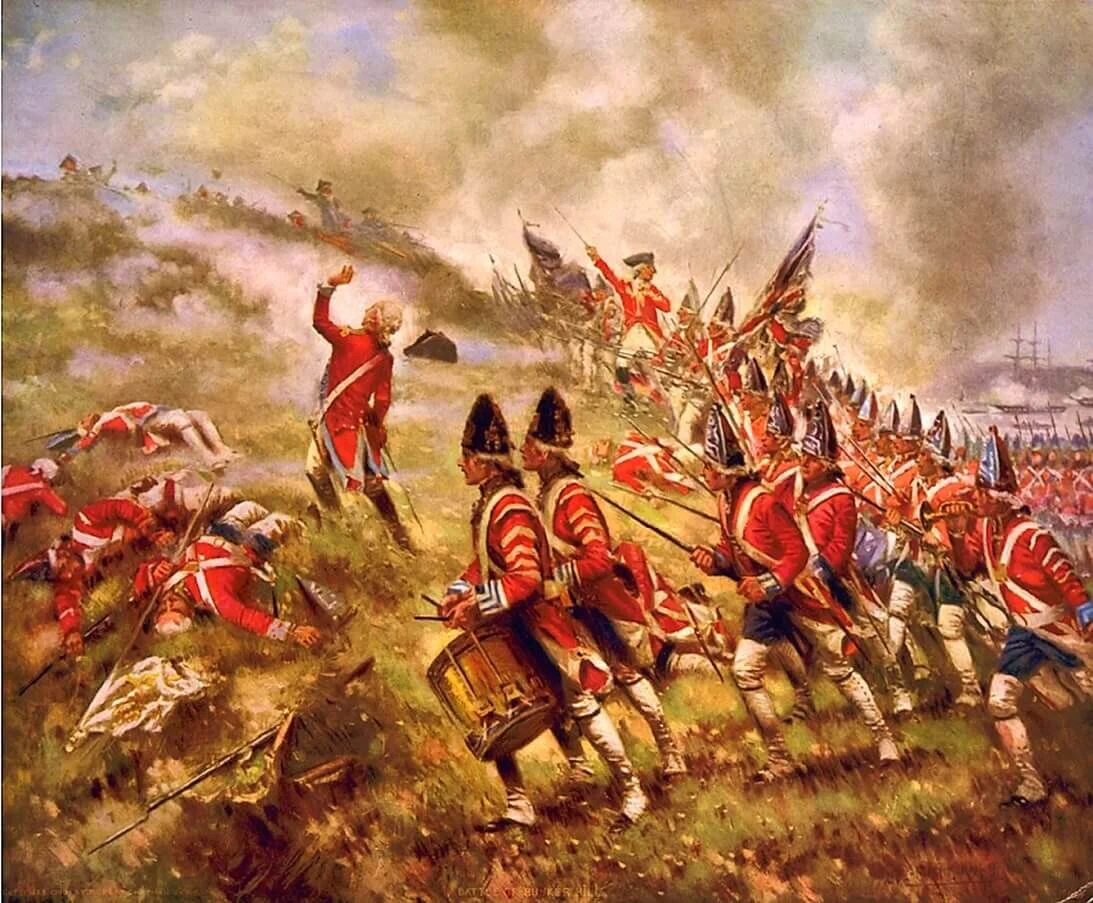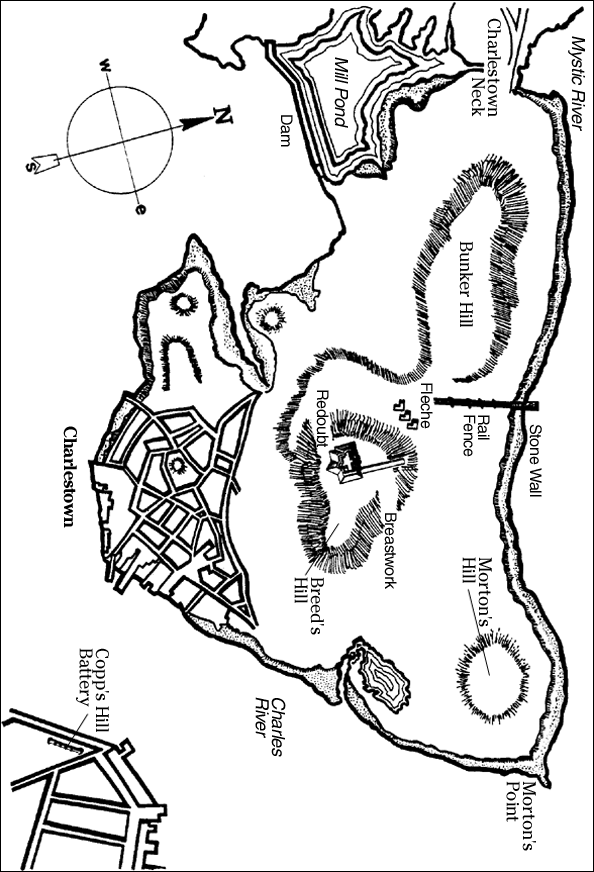Battle at Bunker Hill {Omnibus}
The Battle of Bunker Hill took place on June 17, 1775, just a few months after the start of the American Revolutionary War. This is a great Omnibus (History) lesson for homeschoolers. Your students will study this battle and recreate a war diorama.
The patriot leader, General Ward, having learned that the British intended to fortify Bunker Hill, determined to anticipate them. A body of men, under Colonel Prescott, were assembled at Cambridge, and, after prayer by the president of Harvard College, marched to Charlestown neck. Breed’s Hill was then chosen as a more commanding site than Bunker Hill. There was bright moonlight, and they were so near Boston that the sentinel’s “All’s Well.” was distinctly heard. Yet so quietly did they work that there was no alarm. At daylight, the British officers were startled by seeing the redoubt (a temporary or supplementary fortification, typically square or polygonal and without flanking defenses) which had been constructed.
Resolved to drive the American’s from their position, Howe, the British general, crossed the river with three thousand men and formed them at the landing. The roofs and the steeples of Boston were crowded with spectators, intentlywatching the troops as they slowly ascended the hill. The Patriot ranks lay quietly behind their earth-works until the Redcoats were within ten rods.(old English measure of distance equal to 16.5 feet). When Prescott shouted “Fire!” a blaze of light shot fromt he Redoubt, and whole platoons of the British fell. The survivors, unable to endure the terrible slaughter, broke and fled. They were rallied under cover of the smoke of Charlestown, whihc had been wantonly fired on by the British fleet. Again, they were met by deadly dicharge, and again they fled. Reinforcements being recieved, the third time they advanced. Only one volley smote them, and then the firing ceased. The American ammunition was exhausted. The British charged over the ramparts with fixed bayonets. The Patriots gallantly resisted with clubbed muskets, but were soon driven from the field.
The effect upon the Americans of this first regular battle was that of a victory. Their untrained farmer soldiers had put to flight the British veterans. All felt encouraged, and the determination to fight for liberty was intensified.
ARTWORK
QUESTIONS:
Who are the characters in the artwork? The characters in the artwork are the American and British soldiers of the Revolutionary War.
What is the setting of the artwork? The setting is Bunker Hill.
Who won the battle? The British won the battle when the American soldiers ran out of ammunition.
Into which genre is this painting classified? This painting falls into the history genre.
Is the portrait best described as a religious, literary, allegorical, or historical history painting? This painting is best described as a historical painting within the history painting genre.
ARTWORK CONCEPTS:
History paintings are historically the most respected genre of painting.
Contrary to what you might think from the name, history paintings do not always depict true-life events from history.
The Latin word 'historia' means 'story,' and is where 'history paintings' get their name.
History paintings tell stories, whether true events from history or fictitious stories from the imagination.
History paintings may also be called historical paintings.
History paintings include:
Religious
Literary (books other than mythological)
Allegorical (contains symbolism or hidden meanings
Historical (real historical events).
The city of Boston was being besieged by thousands of American colonists. The British were trying to keep control of the city and control its valuable seaports. The British decided to take control of two hills, Bunker and Breeds, in order to gain a tactical advantage. The American colonists heard about it and went to defend the hills.
A two-day battle between the British forces under the command of General William Howe and the American colonial forces under Colonel William Prescott will forever be known as the Battle of Bunker Hill. The American colonies had occupied Breed's Hill in Charlestown on June 16, 1775, in order to protect the shipyard of nearby Boston. The next morning, the British troops attacked the American troops by crossing the river with three thousand armed soldiers. They were unable to endure the slaughter from the Patriots and retreated to Charlestown, which was being fired upon by British fleets. The British fleets burned the great part of the city of Charlestown to ashes.
During the Battle of Bunker Hill, the British fleet bombarded nearby Charlestown. By nightfall, the greater part of the city was in ashes. This act roused Benjamin Franklin’s indignation, and he wrote a letter to his former friend Straban, a member of the English Parliament, which showed that, though he was a man of peace, he knew when to be angry.
BATTLE OF BUNKER HILL
The Bristish commander, William Howe, led three charges up Breeds Hill. The American colonists fought back the first two charges victoriously, driving the British troops in retreat. But they soon began to run out of ammunition and had to retreat at the third charge. They took the hill but suffered heavy losses. The American colonists fired until they were out of ammunition, then they would quickly retreat. To conserve ammunition, Prescott told his men, "Don't fire until you see the whites of their eyes." Many more colonists, who were untrained farmers, joined the army after this battle and the revolution continued to grow in strength. All were encouraged and determined to fight for liberty.
Even though the battle was fought on Breed's Hill, it has been remembered as the Battle of Bunker Hill.
BUNKER HILL VOCABULARY
Troops: Soldiers or armed forces.
General: A commander of an army, or an army officer of very high rank.
Casualty: A person killed or injured in a war or accident.
<<<DOWNLOAD THE LESSON PLAN HERE >>>
BUNKER HILL DIORAMA
After reading the Battle of Bunker Hill lesson, make a model replica of the battle by recreating a war diorama. Gather supplies such as a box, clay, paper mache, cardboard, plastic figures, leaves, dirt, paint, and scissors.
BUNKER HILL WORKSHEET QUESTIONS
What is the date of the Battle of Bunker Hill?
Where was the Battle of Bunker Hill fought?
Why would both the British and the colonists have wanted to control the Charlestown Peninsula?
Which army shows more determination to win the war?
Which direction did the British commander send his troops up the hill? Was this wise?
Why were the Americans told, “Don’t shoot till you see the whites of their eyes?”
Why did the colonists hold their fire until the British were almost upon the redoubt?
What was the final outcome of the Battle of Bunker Hill?
Lyrical Legacy: This song was composed by a British Officer the day after the Battle.
<<<DOWNLOAD THE LESSON PLAN HERE >>>
About Tiaras & Tantrums: Rese is a mom of three. She enjoys home educating her kiddos, taking photos, and traveling the globe. Rese is a family lifestyle photographer and home educator. Connect with Rese on Instagram, Facebook, Pinterest, and Google+. Sign up via email for the latest updates from Tiaras & Tantrums.













